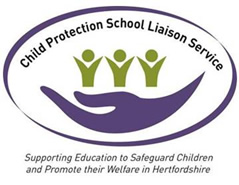Child protection: Hertfordshire guidance
Hertfordshire Safeguarding Children Partnership (HSCP)
The Hertfordshire Safeguarding Children Partnership (HSCP) agrees how the relevant organisations in Hertfordshire will cooperate to safeguard and promote the welfare of children and ensure effectiveness. The HSCP CP procedures set out the arrangements for all agencies to work together to safeguard children.
A key objective for the HSCP is to support parents and carers to provide a safe and stable family life for children and young people. It also supports organisations that provide services to reduce the likelihood of children and young people suffering accidental injury and death, bullying and discrimination, crime and anti-social behaviour.
HSCP procedures
The Designated Senior Person, Headteacher and Governing Body are required to be familliar with these HSCP Protection Procedures.
Continuum of need
All practitioners working with, and on behalf of, children and families need to take responsibility for ensuring everything possible is done to prevent the unnecessary escalation of issues or problems by seeking early intervention. The 'Continuum of Need’ document aims to provide guidance about thresholds to help ensure that the right response is given, by the right services, at the right time.
Children missing in education
A child is missing from education if they are of compulsory school age (age 5-16), do not have a school place and no alternative education arrangements have been made for them.
A child is not defined as missing from education if they have a school place but are not attending regularly, if they are being home educated or if they attend alternative provision such as a college or Education Support Centre.
Drop off and collection of children successfully
School safeguarding practice guidance
This practice guidance has been written to assist the Designated Senior Person for Child Protection (DSP) in considering drop off and collection arrangements for children, to ensure effective safeguarding practice. The guidance is mainly relevant to staff working with primary aged children, although will also apply in some circumstances to older children with additional needs.
It is for schools to use in circumstances where:
- children are collected late
- children are not collected
- it is not safe for children to go home unaccompanied
- there are concerns about supervision before and after school (childcare by a sibling/child walking to or from school alone)
- there are concerns about a parent/carer’s ability to offer safe care, because they are under the influence of alcohol/drugs or there are concerns about their mental health state
NSPCC
This factsheet is aimed primarily at primary schools, but some of the information may be useful for secondary schools. As part of schools’ wider safeguarding responsibilities they should have policies and procedures in place around the dropping off and collection of children to and from the school site. These policies should be shared with parents/carers when a child joins the school.
NSPCC: Safeguarding considerations for before and after school (dropping off and picking up)
